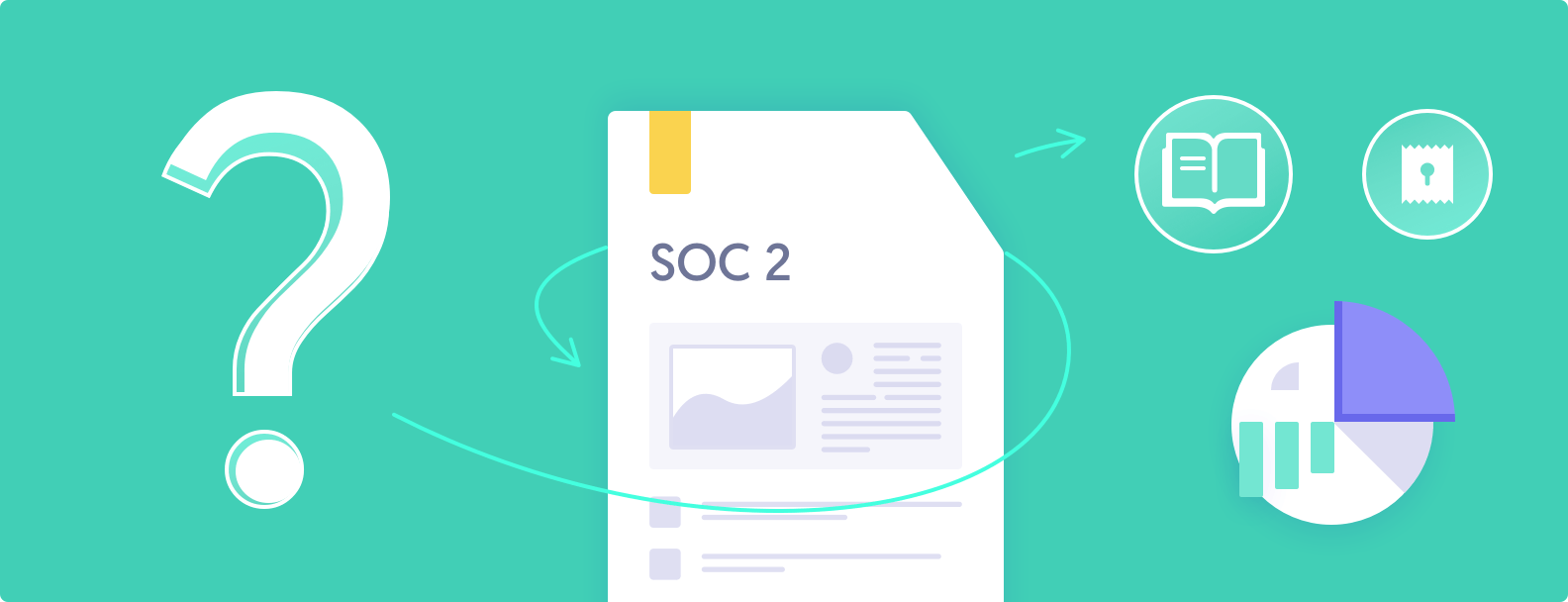
Do You Need a SOC 2® Report? Answers to Common SOC 2 Compliance Questions
Emily Bonnie
Senior Content Marketing Manager
Rob Gutierrez
Senior Cybersecurity and Compliance Manager, CISA, CCSK, CMMC RP
SOC 2® is one of the most common security frameworks SaaS companies rely on today to build trust with customers, particularly for companies in the US. In 2025, it's increasingly become a baseline requirement in B2B sales and vendor due diligence.
But does your organization need it?
In this post, we’ll explain the basics of SOC 2 then share seven questions that can help you decide if SOC 2 compliance is the right choice for your organization.
What is SOC 2®? A crash course
SOC 2 stands for System and Organization Controls 2. It’s a security framework that outlines how companies can securely handle customer data that’s stored in the cloud.
It was created by the American Institute of Certified Public Accountants (AICPA) in 2010 to help service providers build trust with customers.
Getting SOC 2 compliant tells current and potential customers that you have the appropriate safeguards in place to keep their sensitive data secure.
What are the SOC 2® Trust Services Criteria?
A SOC 2 report is an attestation made by an independent CPA that verifies your organization meets the rigorous security standards laid out in the SOC 2 framework. This framework is built on five Trust Services Criteria (formerly called the Trust Services Principles):
- Security: Protecting information from vulnerabilities and unauthorized access
- Availability: Ensuring employees and clients can rely on your systems to do their work
- Processing integrity: Verifying that company systems operate as intended
- Confidentiality: Protecting confidential information by limiting its access, storage, and use
- Privacy: Safeguarding sensitive personal information against unauthorized users
Every SOC 2 audit will include the Security criteria, also referred to as the common criteria, while the others are optional based on the services you provide and ways that you interact and/or handle customer data.
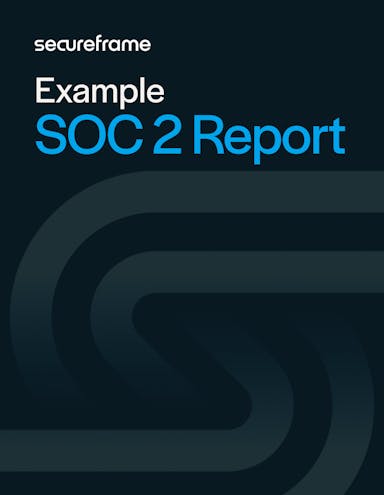
Want to see what a SOC 2 report actually looks like?
Download our illustrative example of a SOC 2 Report to get a sense of what a report might include, how it might be organized, and how long it may be. This can help you if you're preparing for an audit or just determining if a SOC 2 report is the right choice for your organization.
Do you need a SOC 2® report? 7 questions to help you decide
Understanding SOC 2 compliance is just one half of the equation. The other half is deciding whether it’s the right choice for your organization right now. If you answer “yes“ to one or more of these questions, a SOC 2 report is likely worth your while.
1. Are customers and prospects requesting a SOC 2® report?
SOC 2 reports are not legally required. But many clients and potential customers will require a SOC 2 report before doing business with you, especially mid-market and enterprise companies. Even if it’s not a hard requirement, prospects who are comparing similar service providers are likely to see a SOC 2 report as a differentiating factor when making their selection.
Ultimately, SOC 2 has gone from being a competitive advantage in the sales process to being table stakes for information security. Without a SOC 2 report, you‘ll likely see sales processes stall or fall through during procurement and security reviews.
Even if you don‘t have prospects requesting a SOC 2 report now, remember it can take over a year to prepare for and complete your SOC 2 audit. It‘s never too early to start laying the groundwork for compliance.
If you get into a tight timeline to get SOC 2 compliant, automation tools like Secureframe can efficiently speed up this process.
Recommended reading
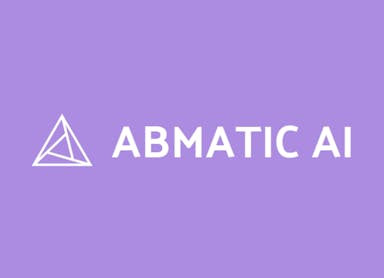
How Abmatic AI Achieved SOC 2 Compliance in Just Six Days and Unblocked Two Deals
2. Does your organization handle sensitive customer data?
Whether you’re using, storing, accessing, or processing customer data, it’s a best practice to be compliant with a cybersecurity standard like SOC 2 or ISO 27001.
Completing the SOC 2 audit process will help you meet your customer's expectations and protect sensitive information from data breaches.
Recommended reading
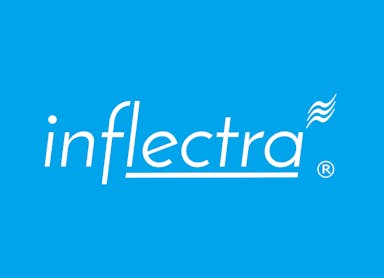
How Inflectra Saves 10 Hours a Month Maintaining SOC 2 Compliance with Secureframe
3. Does your business need defined security processes and policies?
The SOC 2 framework can help strengthen your organization’s security by requiring you to implement a variety of internal controls, including a formal risk management strategy, regular employee training, policy reviews, and periodic audits. These can all improve the way your entire organization thinks about and manages risk.
Not to mention it often uncovers operational inefficiencies like conflicting policies, redundant tools, and outdated software. Preparing for and undergoing a SOC 2 audit pushes organizations to address these issues and build strong, sustainable security processes and policies before security incidents and events occur.
4. Do you need a framework for managing organizational risk?
SOC 2 offers a framework for identifying and addressing risks to your business, whether they stem from security attacks, potential fraud, natural disasters, or faulty operational practices. Risk assessments and other risk management practices are often overlooked, but are crucial to a company’s ability to scale securely and successfully navigate a shifting threat landscape
Achieving SOC 2 compliance provides third-party assurance that you have proper risk management processes and procedures in place.
Recommended reading
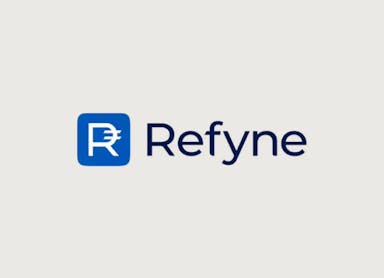
How Fintech Company Refyne Closed Multiple Deals and Achieved SOC 2 Compliance in 3 months with Secureframe
5. Do you want a company culture that prioritizes security?
Security isn’t just the responsibility of senior management, the CISO, or the IT department – it’s everybody’s responsibility.
Building the internal controls necessary for SOC 2 helps foster a better understanding of security throughout your organization and sets the foundation for a culture that prioritizes security.
To build and maintain this security-first culture, start SOC 2 preparation as early as possible, be transparent with key stakeholders and team members about any new policies and procedures, and encourage them to speak up if they notice any potential risks or policy violations.
6. Do you need to evaluate controls relevant to the Trust Services Criteria?
If you want to evaluate controls relevant to the security, privacy, availability, processing integrity, and/or confidentiality of customer data, then a SOC 2 report likely makes sense for your organization.
However, SOC 2 is just one of the frameworks created by the AICPA. If you want to instead evaluate controls relevant to your clients’ internal control over financial reporting, then a SOC 1 report is a better fit.
Designed for organizations that impact a customer’s financial reporting, like payroll or claims processing companies, SOC 1 reports attest that financial statements and other information is being handled securely.
7. Will intended users understand detailed information about your organization’s systems and controls?
If you do want to evaluate controls relevant to TSC, then the next question you have to ask is who your intended audience is.
If the intended users have the technical knowledge and expertise required to understand systems and controls, then they can likely make effective use of a SOC 2 report. However, if the intended users lack this knowledge and expertise, then they don’t need detailed information about your systems and controls and therefore may be satisfied with another framework created by the AICPA: SOC 3.
A SOC 3 report is similar to SOC 2 in that both reports evaluate an organization’s data security controls. However, unlike SOC 2 reports, SOC 3 reports don’t go into detail about your systems and control tests and results. Because they’re more high-level, SOC 3 reports can be shared publicly, like on a company website.
Alternatively, if intended users have this technical knowledge but want information about your organization’s controls related to TSC to better understand and manage supply chain risks specifically, then you may want a SOC for Supply Chain examination and related report.
| SOC Suite of Services | SOC 2 | SOC 3 | SOC for Supply Chain |
|---|---|---|---|
| Purpose | Provide specific users with information about controls related to security, availability, processing integrity, confidentiality or privacy | Provides general users with easy-to-read report on organization’s controls related to security, availability, processing integrity, confidentiality, or privacy | Provide specific users with information about controls related to security, availability, processing integrity, confidentiality or privacy to better understand and manage supply chain risks |
| Applicable to | Service organizations | Service organizations | Producers, manufacturers, and distributors |
| Intended users | Management and specified parties, such as user entities | Prospects and any other users with need of assurance of service organization’s controls | Management, customers, business partners |
| Distribution | Restricted | General audience | Restricted |
| Control criteria | AICPA Trust Services Criteria | AICPA Trust Services Criteria | AICPA Trust Services Criteria |
| Contents of report | Description of system, management’s assertion, and CPA’s opinion (and Description of tests and results for Type 2) | Management’s assertion and CPA’s opinion | Description of the organization’s production, manufacturing, or distribution system, management’s assertion, CPA’s opinion, and Description of tests and results |
Recommended reading
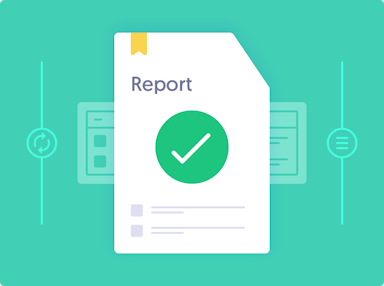
What are the different types of SOC reports?
Do you need a SOC 2® Type 1 or Type 2 report?

Once you’ve decided that a SOC 2 report is right for your organization, you have to decide between a Type 1 and Type 2 report. This is one of the most important decisions organizations need to make when pursuing SOC 2 compliance.
Here’s the main difference between SOC 2 Type 1 and Type 2 (sometimes referred to as SOC 2 Type I and Type II) reports:
- Type 1 reports assess your internal security controls at a single point in time. The auditing firm will evaluate whether your current security controls are sufficient for protecting sensitive data and whether they fulfill the applicable Trust Services Criteria requirements.
- Type 2 reports evaluate how well a service organization’s controls perform over a period of time, with a typical audit window of 3-12 months. A SOC 2 Type 2 report takes longer to complete and is typically more expensive, but it can provide greater assurance to customers, especially upmarket.
Most organizations choose their report type based on timelines, resources, and customer requests. If you need a SOC 2 report as soon as possible, a Type 1 report can be completed in a matter of weeks. However, they’re often a short-term solution.
Many potential customers are rejecting Type 1 reports, and you’ll likely need a Type 2 report at some point. Opting to complete a Type 2 report straight away can save you time and money since you’ll only have to undergo one audit.
Check out the video below for a quick recap of the differences between these types of SOC 2 reports from Secureframe Chief Product and Operations Officer Chris Sesi.
Why should you ask service providers for their SOC 2® report?
Security doesn’t start and end with your own company and employees — vendor risk management is an important part of keeping customer data safe. If you aren’t completing a security review as part of your vendor selection process, you should be.
By reviewing a SOC 2 report, you’ll get:
- A deeper understanding of the system used to deliver services
- A management assertion from the service provider
- An independent auditor‘s assessment of the service provider‘s control environment and their formal opinion on its design and/or operating effectiveness
Reviewing a vendor’s SOC 2 report can help you better understand any additional risks you might be taking on by doing business with them, and plan for any additional controls you need to implement to address those risks in your own SOC 2 audit.
Recommended reading

Learning from the AWS SOC 2 Report: How Cloud Service Providers Support—Not Own—Your Compliance
How can you get a SOC 2 report faster and with less effort?
Secureframe makes it easier, faster, and more cost-effective to get a SOC 2 report and maintain compliance over time.
Our platform automates hundreds of manual tasks, from collecting evidence and drafting policies to mapping controls to the SOC 2 Trust Services Criteria. You'll also get access to auditor-approved templates, expert support, and continuous monitoring to flag issues before they impact your audit readiness.
With Secureframe, customers
- Save hundreds of hours on tedious audit prep, like manually writing security policies, collecting evidence, and performing self-assessments
- Eliminate the need for outside consultants
- Get compliant in weeks, not months
- Maintain ongoing compliance with real-time continuous monitoring and dashboards
As a result of these capabilities and more, you’ll get your SOC 2 report faster and save money while strengthening your security posture.
Request a demo to learn more about how we can help you get a SOC 2 report.
Recommended reading
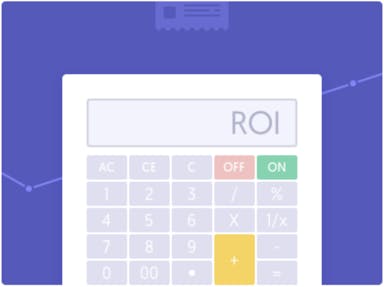
SOC 2 Audit Costs
FAQs
What's the process for getting a SOC 2 report?
To start, you’ll need to find an accredited CPA to issue your report, preferably one who has experience with similar companies in your industry. If working with Secureframe or any other automation tool, we recommend partnering with an audit firm that is familiar with that automation tool in order to streamline the process.
Once the audit begins, the auditor will interview your team about company policies and processes. They will also review documentation and evidence of how your controls work, and consult with process owners for clarification or to request additional evidence.
At the end of the audit, you’ll receive a written SOC 2 report summarizing your audit scope, systems and control environment, and control tests. The report will also include the auditor’s formal opinion about how well your controls perform.
For a more in-depth look at the steps involved in getting a SOC 2 report, check out our SOC 2 compliance checklist.
Who should have a SOC 2 report?
Any service organization that stores, processes, or transmits customer data — especially SaaS providers and cloud-based businesses — should strongly consider a SOC 2 report. It’s often expected by mid-market and enterprise customers as part of vendor due diligence and security reviews.
If your business handles sensitive customer information or is asked about your security posture during procurement, a SOC 2 report can be the difference between winning and losing deals.
How long does it take to get a SOC 2 report?
Depending on the type of report you choose, a SOC 2 audit can take anywhere from 1-12 months. But preparing for a successful audit can take much longer. You’ll need to select your TSC, write policies and procedures, train your staff, conduct a gap analysis, implement any new controls, and select an auditor. All of these tasks can easily eat up hundreds of hours for your team.
Compliance automation can help you prepare for an audit in a fraction of the time. Secureframe automatically collects evidence during your audit window and alerts you of any nonconformities in your tech stack. You can also track your progress towards audit readiness with a central dashboard to get a real-time view of what you still need to do before bringing in an auditor.
How often are SOC 2 reports required?
A new SOC 2 report is typically required annually. Although technically SOC 2 reports don’t expire, customers and other stakeholders will consider it outdated if too much time has elapsed. The auditor's opinion is typically accepted for twelve months following the date the SOC 2 report was issued. Because of this, the vast majority of service organizations renew their attestation report every year.
Your customers or partners may have different expectations though or your competitors may have different timelines. For example, AWS issues two SOC 2 report a year, each covering different 12-month reporting periods. So it's important to understand your customer and competitors, plan ahead, and build SOC 2 maintenance into your annual compliance strategy.
What are the potential results for a SOC 2 report?
Every SOC 2 report includes the auditor’s formal opinion about how well your controls perform. There are four types of opinions:
- Unqualified opinion: The organization’s controls satisfy the requirements for compliance
- Qualified opinion: The organization is close to coming into compliance, but one or more areas aren’t quite there yet
- Adverse opinion: The organization’s controls fall short in one or more non-negotiable areas
- Disclaimer of opinion: The auditor doesn’t have enough information to support a formal opinion
Who needs a SOC 2 vs SOC 1 report?
SOC 2 and SOC 1 are both attestation reports developed by the AICPA against the SSAE 18 auditing standard, but serve different purposes depending on the type of services you provide and what your customers need assurance about.
- SOC 1 is focused on internal controls over financial reporting (ICFR). If your services could impact a customer’s financial statements—such as payroll processing or transaction handling—you likely need a SOC 1 report.
- SOC 2, on the other hand, assesses how your organization manages customer data based on five criteria: security, availability, confidentiality, processing integrity, and privacy. If you’re a SaaS provider or offer cloud-based services that store or process sensitive data, a SOC 2 report is typically more relevant.
Still not sure? This SOC 1 vs SOC 2 comparison guide breaks down the key differences and use cases to help you decide which report is right for your business.

Emily Bonnie
Senior Content Marketing Manager
Emily Bonnie is a seasoned digital marketing strategist with over ten years of experience creating content that attracts, engages, and converts for leading SaaS companies. At Secureframe, she helps demystify complex governance, risk, and compliance (GRC) topics, turning technical frameworks and regulations into accessible, actionable guidance. Her work aims to empower organizations of all sizes to strengthen their security posture, streamline compliance, and build lasting trust with customers.

Rob Gutierrez
Senior Cybersecurity and Compliance Manager, CISA, CCSK, CMMC RP
Rob Gutierrez is an information security leader with nearly a decade of experience in GRC, IT audit, cybersecurity, FedRAMP, cloud, and supply chain assessments. As a former auditor and security consultant, Rob performed and managed CMMC, FedRAMP, FISMA, and other security and regulatory audits. At Secureframe, he’s helped hundreds of customers achieve compliance with federal and commercial frameworks, including NIST 800-171, NIST 800-53, FedRAMP, CMMC, SOC 2, and ISO 27001.